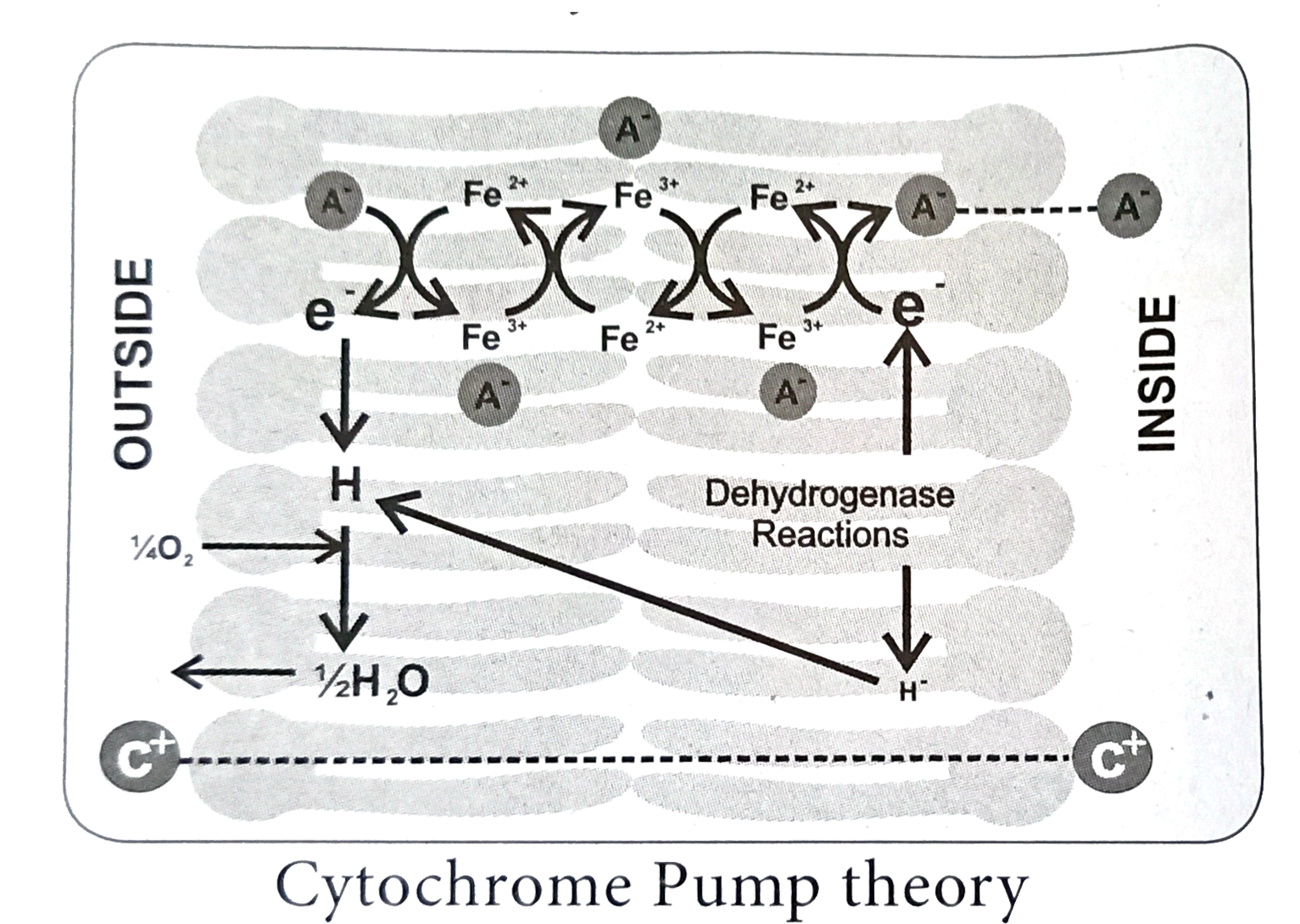Describe Lundegardh's Cytochrome Pump Theory .Solution in Tamil
Lundegardh's Cytochrome Pump Theory:
Lundegardh and Burstrom (1933) observed a correlation between respiration and anion absorption. When a plant is transferred from water to a salt solution the rate of respiration increases which is called as anion respiration or salt respiration. Based on this observation Lundegardh (1950 and 1954) proposed cytochrome pump theory which is based on the following assumptions:
i. The mechanism of anion and cation absorption are different.
ii. Anions are absorbed through cytochrome chain by an active process, cations are absorbed passively.
iii. An oxygen gradient responsible for oxidation at the outer surface of the membrane and reduction at the inner surface.
According to this theory, the enzyme dehydrogenase on inner surface is responsible for the formation of protons (H+) and electrons (e−). As electrons pass outward through electron transport chain there is a corresponding inward passage of anions. Anions are picked up by oxidized cytochrome oxidase and are transferred to other members of chain as they transfer the electron to the next component.
The theory assumes that cations (C+) move passively along the electrical gradient created by the accumulation of anions (A−) at the inner surface of the membrane.
Main defects of the above theory are:
(i) Cations also induce respiration.
(ii) Fails to explain the selective uptake of ions.
(iii) It explains absorption of anions only.

Topper's Solved these Questions
- TRANSPORT IN PLANTS BOOK - FULL MARKSCHAPTER - TRANSPORT IN PLANTS EXERCISE - Additional Questions Solved (V). Higher Order Thinking Skills (HOTs))
6 Videos
- TRANSPORT IN PLANTS BOOK - FULL MARKSCHAPTER - TRANSPORT IN PLANTS EXERCISE - Additional Questions Solved (III. Short Answer Type Questions)
25 Videos
- TISSUE LEVEL OF ORGANISATION BOOK - FULL MARKSCHAPTER - TISSUE LEVEL OF ORGANISATION EXERCISE - ADDITIONAL QUESTIONS SOLVED (II. ANSWER THE FOLLOWING QUESTIONS)
17 Videos
- TRENDS IN ECONOMIC ZOOLOGYBOOK - FULL MARKSCHAPTER - TRENDS IN ECONOMIC ZOOLOGYEXERCISE - Additional Questions Solved ( Answer the following questions.)
99 Videos
Similar Questions
Why during rainy seasons, the wooden doors and windows are difficult to closs and open ? Give the phenomenon behind this and also define the phenomenon.
View SolutionDraw a Flow Chart illustrating various types of cell to cell transport .
View SolutionDefine tissues .
View SolutionWhat is Economic Zoology?
View SolutionAccording to potassium pump theory of Levitt
View SolutionAccording to cytochrome pump theory the anions and cations are transported by _______ .
View SolutionExplain cytochrome pump theory ?
View Solutionসক্রিয় পরিবহনে প্রোটিন পাম্প এর ভূমিকা বর্ণনা করো।
View SolutionDescribe Lundegardh's Cytochrome Pump Theory .
View SolutionRelay pump theory of Godlewski was proved in the year
View SolutionRelay pump theory was put forth by ........... .
View SolutionState Relay Pump theory.
View Solutionரிலே பம்ப் கோட்பாட்டை முன்வைத்தார்
View SolutionExplains the proton-potassium pump theory.
View SolutionWho proposed relay pump theory of the ascent of sap ?
View Solution
